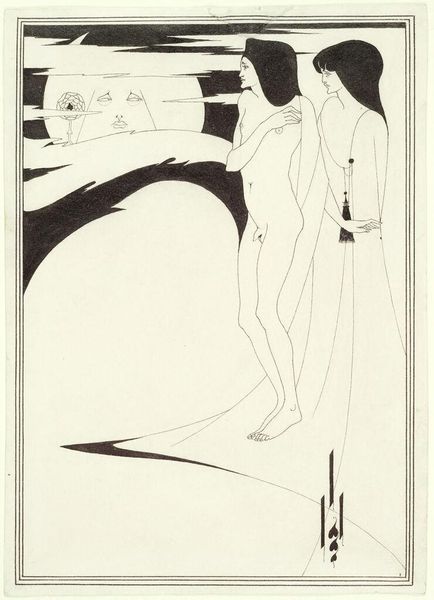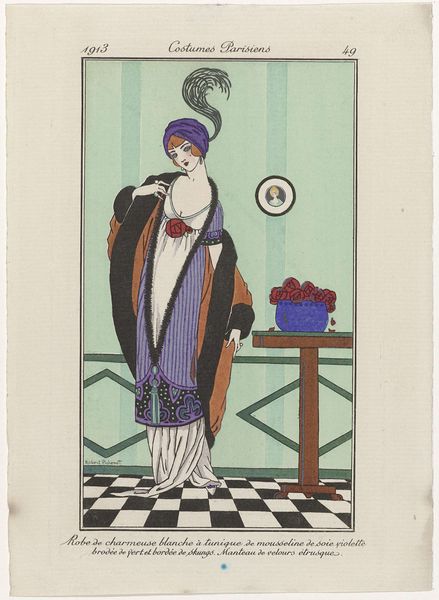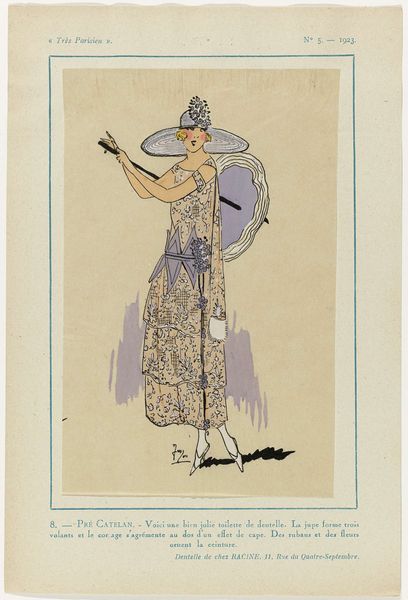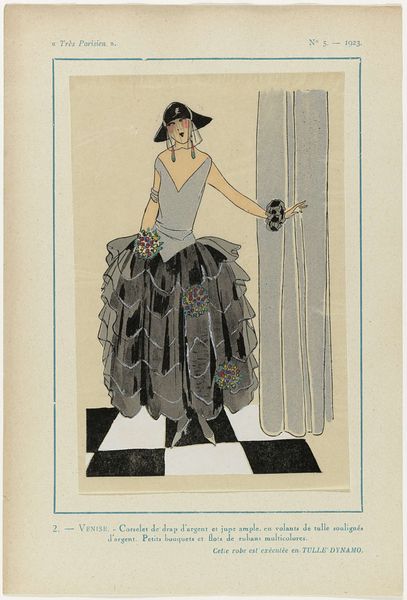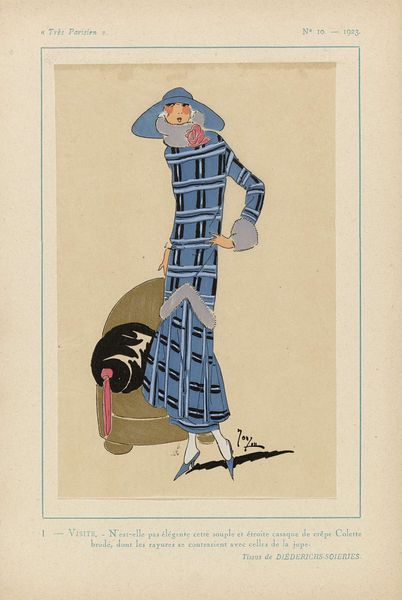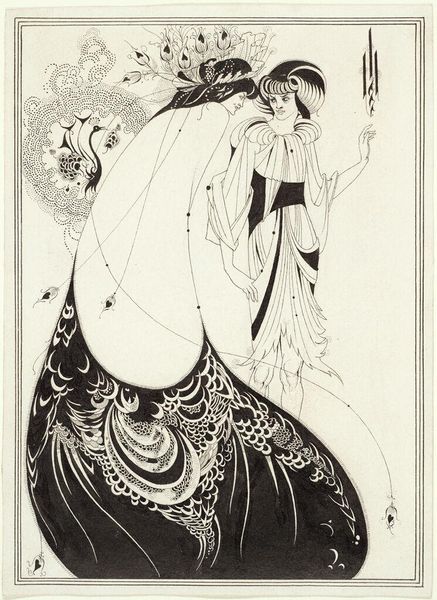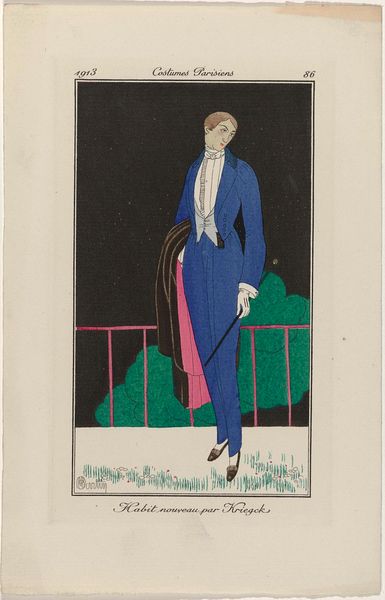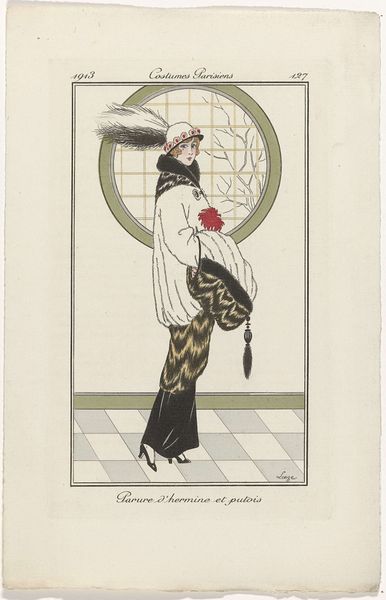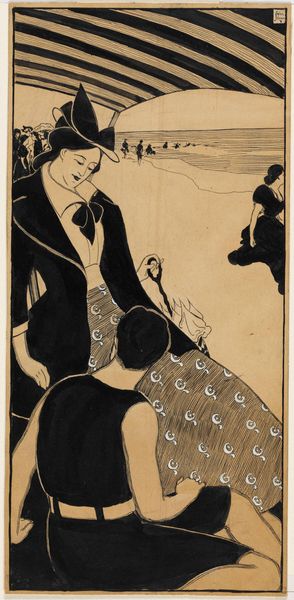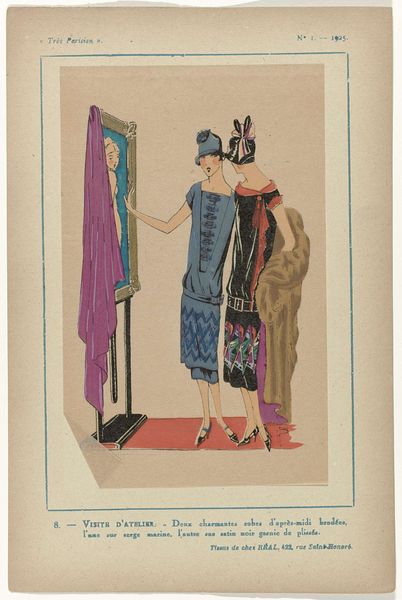![['Journal des Dames et des Modes: the Fashion Illustrators', 'Journal des Dames et des Modes: Fashion News'] by Pierre-Emile Legrain](/_next/image?url=https%3A%2F%2Fd2w8kbdekdi1gv.cloudfront.net%2FeyJidWNrZXQiOiAiYXJ0ZXJhLWltYWdlcy1idWNrZXQiLCAia2V5IjogImFydHdvcmtzLzUxNjk4ZDhlLTQ0MzUtNDY1MS1iZDNmLTAxNjhhMTdhOGU1Ni81MTY5OGQ4ZS00NDM1LTQ2NTEtYmQzZi0wMTY4YTE3YThlNTZfZnVsbC5qcGciLCAiZWRpdHMiOiB7InJlc2l6ZSI6IHsid2lkdGgiOiAxOTIwLCAiaGVpZ2h0IjogMTkyMCwgImZpdCI6ICJpbnNpZGUifX19&w=3840&q=75)
['Journal des Dames et des Modes: the Fashion Illustrators', 'Journal des Dames et des Modes: Fashion News'] 1913
0:00
0:00
Dimensions: height 178 mm, width 106 mm
Copyright: Rijks Museum: Open Domain
Pierre-Emile Legrain made this fashion plate, sometime around 1913, likely using pochoir. It’s interesting how the image flattens space in a way that reminds me of Matisse. There’s a real tension between the graphic quality, almost like a poster, and the delicate details, like the fur trim on the jacket. Take a look at the stripes in the background and the way they curve slightly as if seen through a fisheye lens. This really messes with your sense of depth. It's kind of funny, like an optical illusion. The way Legrain overlaps colors and shapes makes your eye jump around the image. It’s playful and a bit dizzying, like when you are trying to follow the plot in a French New Wave film. This work reminds me of Erté, who was doing similar fashion illustrations around the same time. But where Erté is all about elegance and glamour, Legrain has a quirky, modern edge. It’s like he's winking at you from across the decades.
Comments
rijksmuseum about 2 years ago
⋮
['The Journal des Dames was inspired by the eponymous fashion magazine from the previous century and, like the earlier publication, referred to its illustrations as Costumes Parisiens. These Costumes Parisiens (184 illustrations in total) were drawn in a new, flat, decorative manner by George Barbier, Jan van Brock, Victor Lhuer and other Parisian artists, each with a signature style. Every issue came with two or three separate plates. These showed a wide variety of fashionable apparel, from elegant evening attire to outdoor outfits. A brief caption provides the name of the garment and the material from which it was made, but never the name of a fashion house.', 'The Journal de Dames et des Modes was marketed towards the affluent, sophisticated elite. The text consisted of literary contributions and articles on various topics written by leading Parisian literati. The fashion commentaries discussed the full spectrum of new trends, such as ‘strolling bareheaded by motorcar,’ matching the colour of one’s dress to that of one’s automobile, the impracticality of small umbrellas, the wearing of sky-blue and grass-green wigs, and the vogue among women for large flat hats or for the small toques adorned with feathers that projected from their foreheads like antennae.']
Join the conversation
Join millions of artists and users on Artera today and experience the ultimate creative platform.
